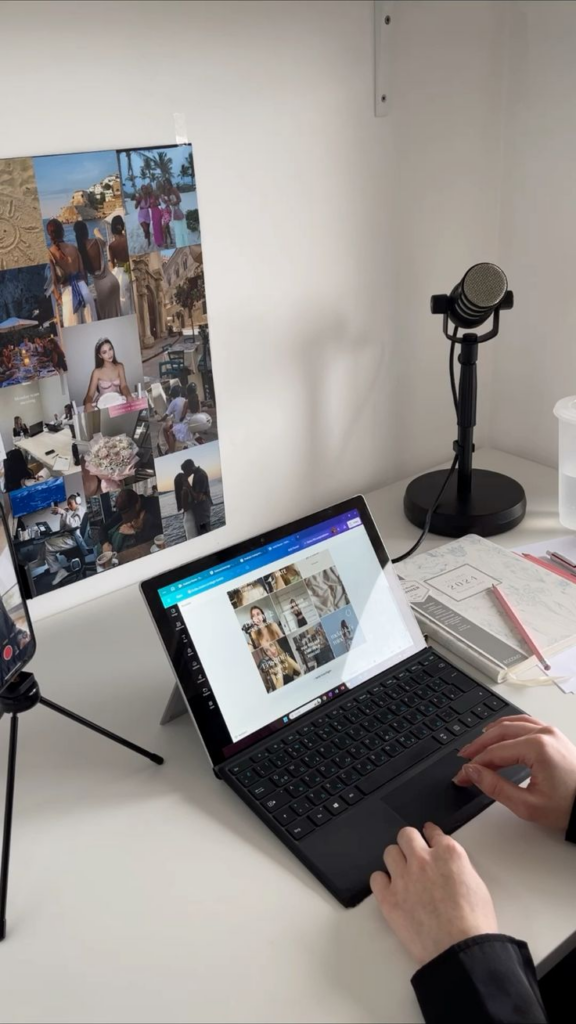Did you know that 81% of content creators who actively engage in affiliate marketing see a significant increase in their income? In today’s digital landscape, turning your online content into a source of income is more achievable than ever. Whether you’re a blogger, influencer, or content creator, monetising your content requires strategy, consistency, and a deep understanding of your audience. Below, we'll delve into actionable tips and strategies to help you achieve this, supported by real-life examples that illustrate how to turn your digital presence into a profitable venture.

1. Understand Your Audience
Knowing your audience is the foundation of monetisation. Understanding their needs, preferences, and behaviours will guide your content creation and monetisation strategies. For instance, if your audience is primarily interested in eco-friendly fashion, your content and monetisation efforts should align with that interest.
For instance, fashion blogger Kristina Bazan, known for her blog “Kayture,” exemplifies the power of understanding your audience. As she noticed her followers’ growing interest in sustainable fashion, she shifted her content to focus on eco-friendly brands. By integrating affiliate links to eco-friendly fashion products, Kristina aligned her content with her audience’s values, resulting in increased engagement and successful monetisation. This approach underscores how aligning your content with your audience’s preferences can enhance both relevance and revenue. For more insights into effective audience analysis, consider exploring these case studies on audience analysis and successful audience engagement strategies. Additionally, tools like Google Analytics and Facebook Insights can provide valuable data to help tailor your content strategy. For more tips on understanding your audience, check out The Art of Content Creation: Becoming a Social Media Influencer.

2. Explore Different Monetisation Channels
There are multiple ways to monetise your content, including affiliate marketing, sponsored posts, digital products, and ad revenue. It's important to diversify your income streams to maximise your earnings.
Affiliate Marketing:
Affiliate marketing involves promoting products or services and earning a commission for every sale made through your referral. Choose products that align with your content and audience to maintain credibility and trust. Affiliate marketing can take many forms, such as using Amazon Associates to promote products, LTK (formerly RewardStyle) to feature fashion items, or Booking.com to earn commissions on hotel bookings.

Sponsored Posts:
Sponsored posts are a great way to earn money by collaborating with brands that align with your content and values. Essentially, a brand pays you to create content that showcases their product or service to your followers. These partnerships can be quite profitable, but it’s important to work with brands that truly resonate with your audience.
For instance, if you’re a beauty influencer who focuses on cruelty-free products, partnering with a luxury skincare brand that shares your values makes sense. Your audience is more likely to trust and engage with the content because it aligns with what they already care about. On the flip side, promoting a brand that doesn’t fit your usual style can turn off your followers and hurt your credibility. When done right, sponsored posts can be a win-win, giving your audience something they’ll love while also boosting your income.

Digital Products:
Creating and selling digital products like eBooks, courses, or templates can be a highly profitable way to monetise your expertise.
Pat Flynn, a well-known entrepreneur and host of the Smart Passive Income podcast, has expertly diversified his income by leveraging various monetisation strategies. He created and sold online courses through platforms like Teachable, offering valuable educational content to his audience. In addition, Flynn authored eBooks on entrepreneurship and passive income, providing actionable insights and generating additional revenue. His affiliate marketing efforts, including partnerships with companies and promotion of products relevant to his audience, further expanded his income streams. Flynn’s success story highlights the power of combining multiple monetisation strategies to build a robust and resilient business model, demonstrating how entrepreneurs can maximise their earning potential by diversifying their income sources.

3. Build a Strong Personal Brand
Your personal brand is a powerful tool in monetising your content. A strong brand makes you more attractive to potential sponsors and partners, and it helps build a loyal following that trusts your recommendations.
An example of this is Chiara Ferragni, a leading fashion influencer, leveraged her unique style and entrepreneurial spirit to build a powerful personal brand through her blog, The Blonde Salad. Her strong online presence enabled collaborations with luxury brands like Dior and Chanel, boosting her credibility and revenue. Additionally, Ferragni capitalised on her brand by launching her own product lines, such as the Chiara Ferragni Collection, which significantly increased her income. Her success illustrates how a distinctive personal brand and strategic partnerships can transform online content into a profitable venture.

4. Leverage Social Media Platforms
Social media is an essential tool for growing your audience and driving traffic to your monetised content. Each platform offers different opportunities for monetisation.
YouTube:
Creators can monetise their videos through ads, sponsored content, and channel memberships. For instance, YouTuber Ali Abdaal earns significant revenue from ads and sponsorships by creating educational and productivity content that resonates with his audience.
Instagram:
Instagram offers opportunities for sponsored posts, affiliate marketing, and even selling your own products through Instagram Shops. Influencers and content creators on Instagram often collaborate with brands to promote products, earning money while providing value to their followers.
TikTok creators can earn through the Creator Fund (not currently available for Australians), brand partnerships, and live gifts. By producing engaging short-form videos, creators can tap into TikTok’s dynamic audience and monetise their content in innovative ways.
Managing your presence across these platforms can be streamlined with tools like Hootsuite and Buffer. Hootsuite helps you monitor and manage various social channels from one dashboard, while Buffer simplifies scheduling and engagement. Using these tools can enhance your social media strategy and ensure that your monetised content effectively reaches your audience. For tips on effectively managing your social media presence and content, visit our Master Your Social Media: Unlock Secrets to Flawless Content Calendar Planning.

5. Offer Exclusive Content Through Memberships or Subscriptions
Offering exclusive content through memberships or subscriptions is a great way to generate recurring revenue. Platforms like Patreon or Substack allow creators to charge a monthly fee for access to premium content.
Lindsay Ellis, a film critic and content creator, uses Patreon to offer exclusive content to her supporters. Her Patreon has become a significant source of income, allowing her to create content independently and maintain creative control.
6. Track and Optimise Your Efforts
Finally, it’s essential to track the performance of your monetisation strategies and continuously optimise them. Use analytics tools to understand what’s working and what’s not, and be ready to adjust your approach accordingly. Similarly to how understanding your audience helps you tailor your content, using tools like Google Analytics, Facebook Insights, and Instagram Insights helps you monitor and analyse your content’s performance. For instance, Google Analytics reveals website traffic and user behaviour, which can indicate which topics are resonating with your audience. Facebook Insights and Instagram Insights offer data on social media engagement and demographics, guiding you on what content performs best on these platforms. Additionally, tools like Hootsuite Analytics and Buffer Analytics allow you to track social media metrics across various platforms, ensuring that your content strategy remains aligned with your audience’s preferences and drives revenue.
Monetising your online content is a journey that requires a deep understanding of your audience, a strong personal brand, and the right mix of monetisation strategies. By diversifying your income streams and continually optimising your efforts, you can turn your passion into a profitable endeavour. Whether through affiliate marketing, sponsored posts, or offering exclusive content, the possibilities are endless for those willing to put in the work.

